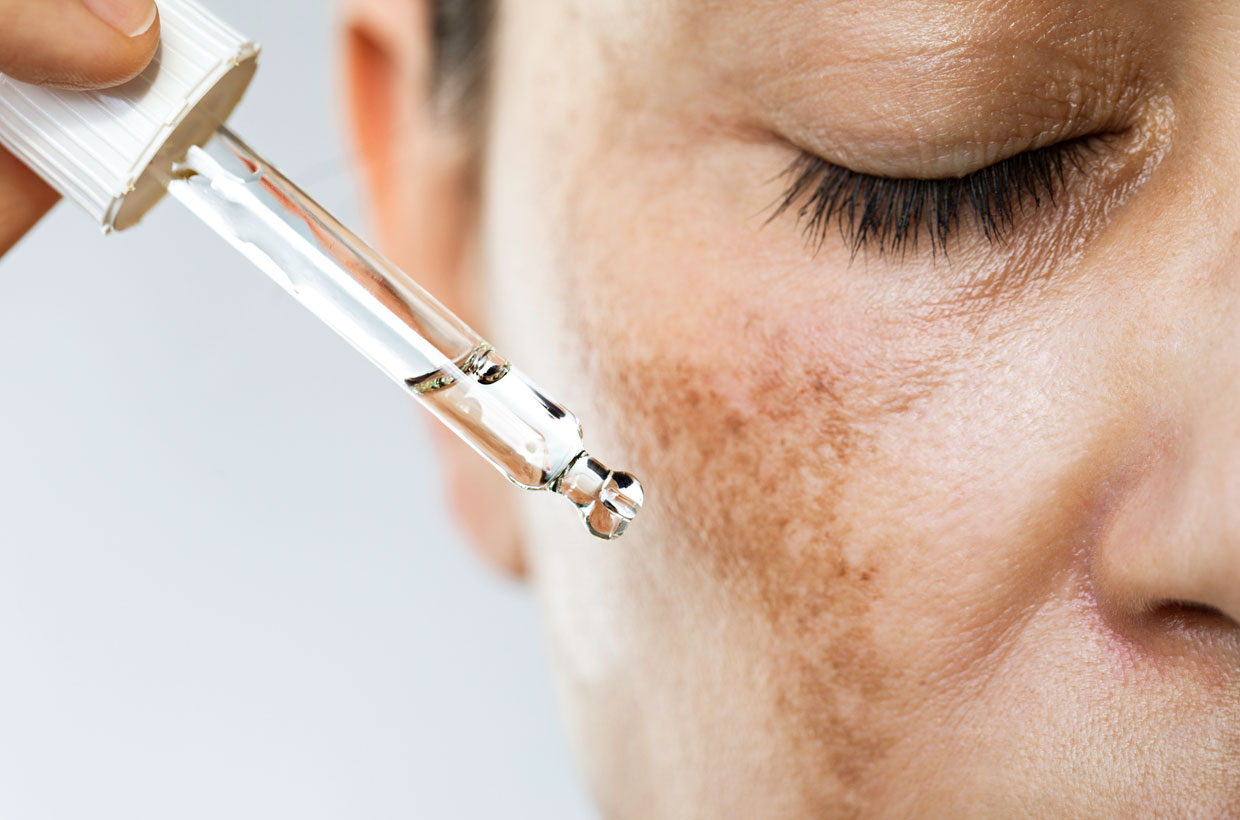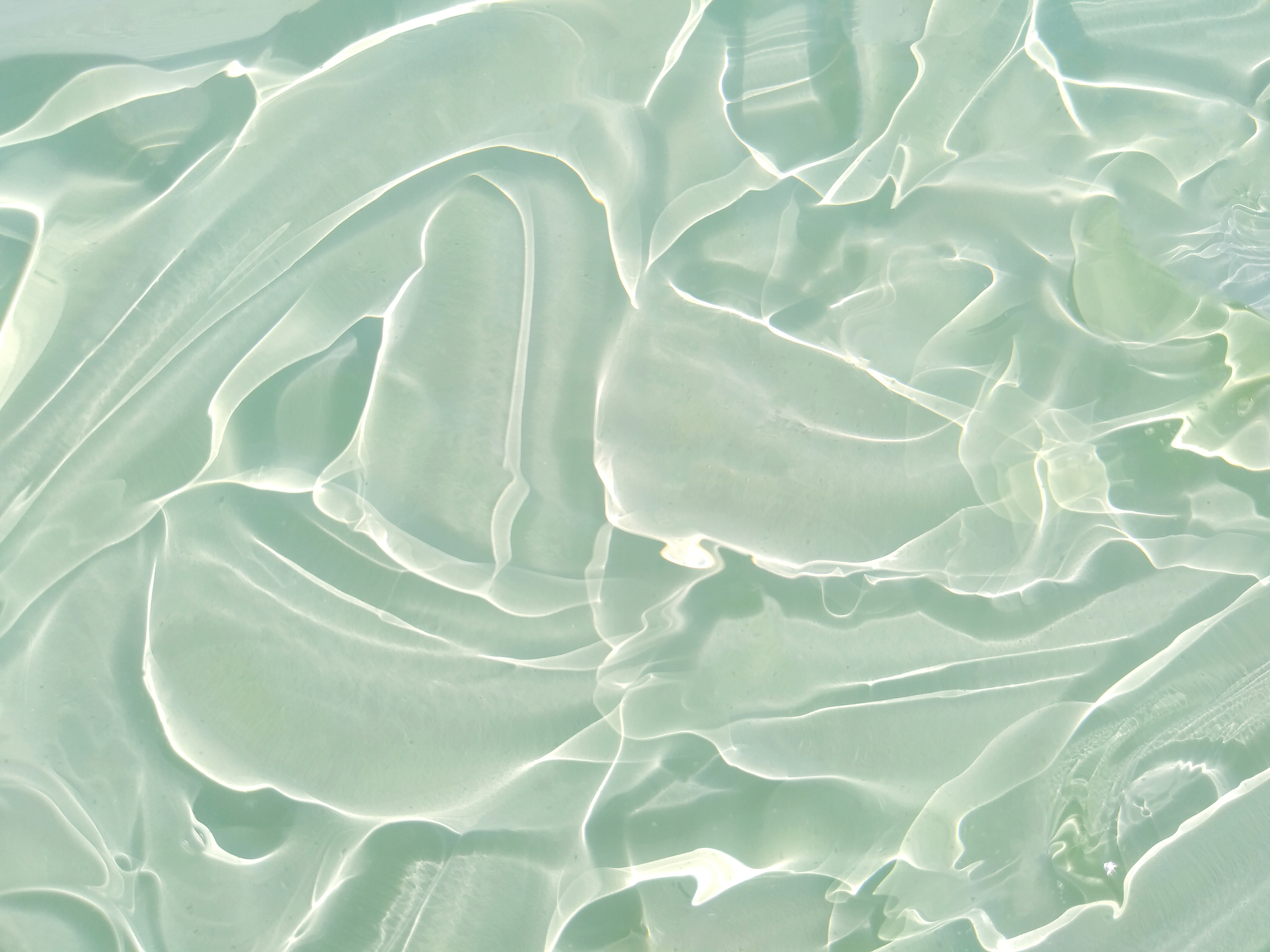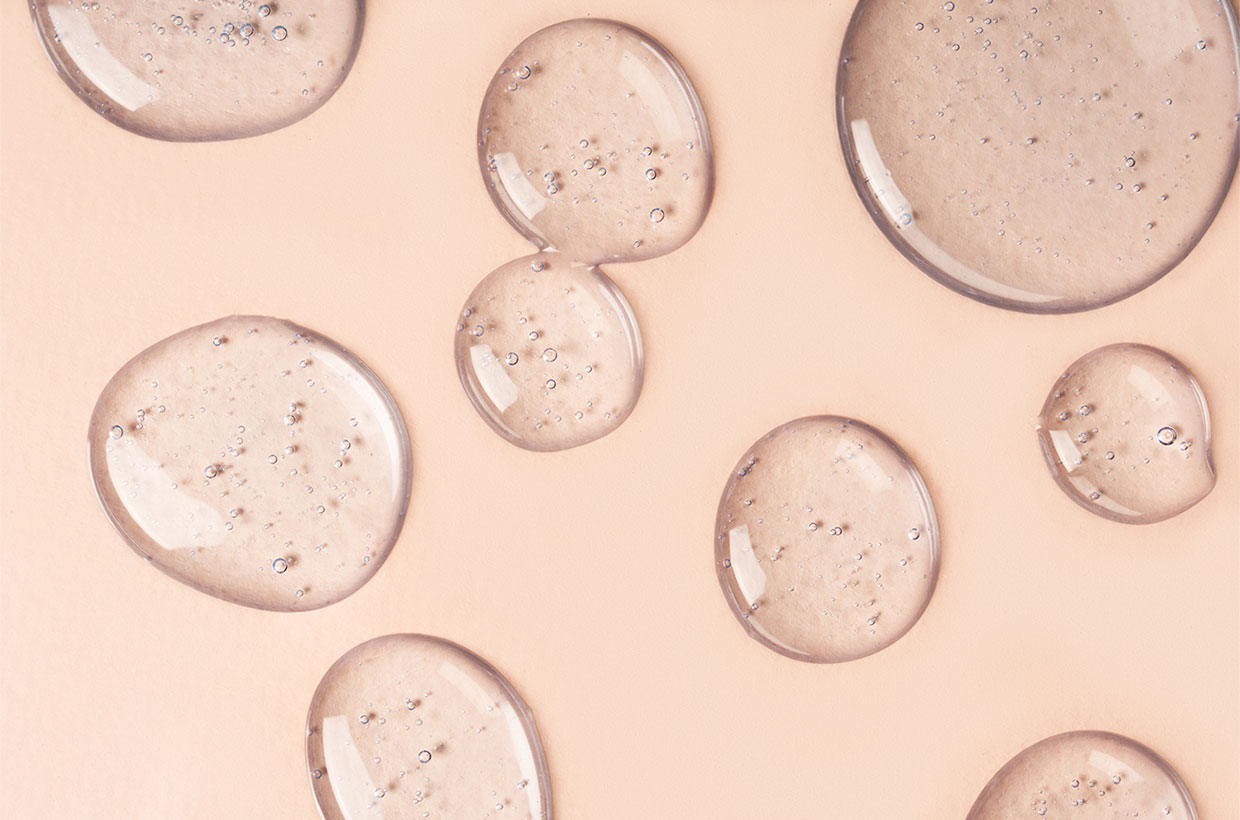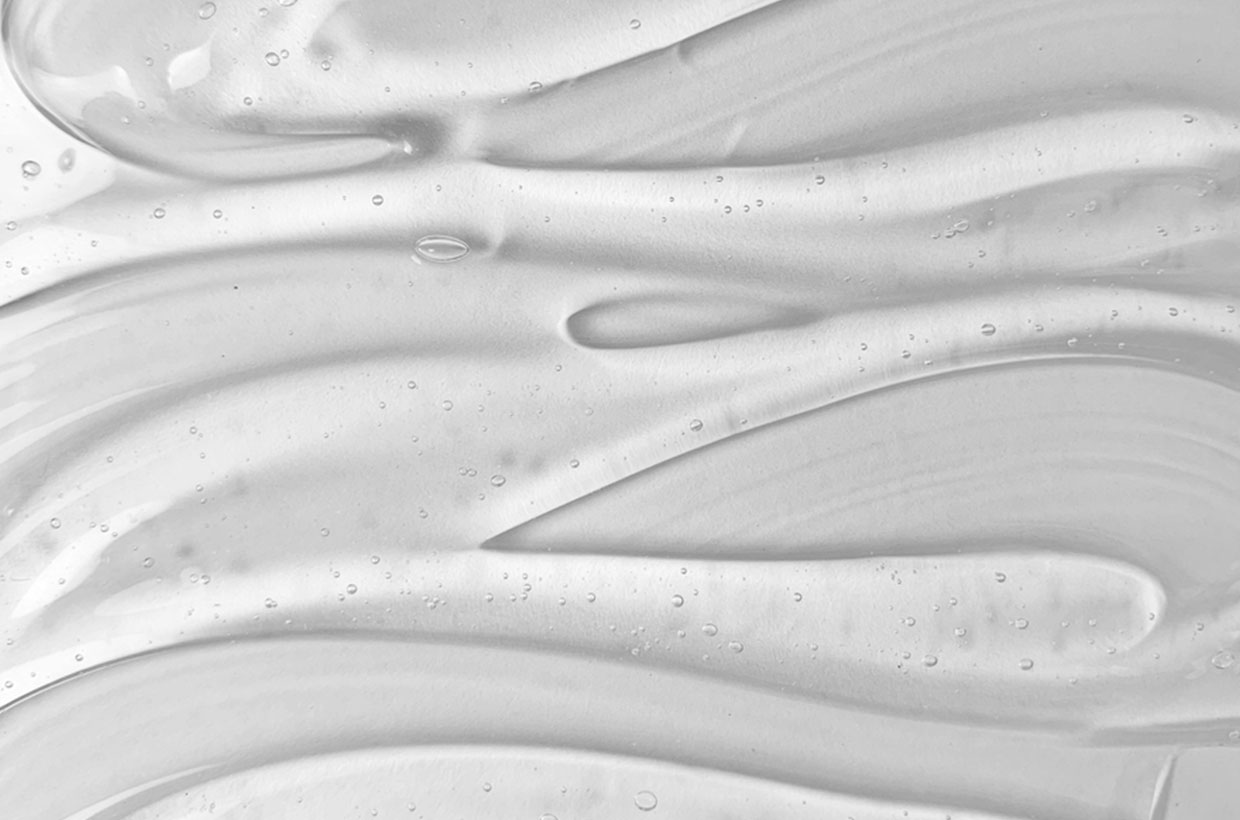HYPERPIGMENTATION: The Root Causes + Long-Term Cures

Estheticians in 2023 and beyond are the saviors in skincare that can truly make a difference in the lives of their clients through a deep understanding of how to treat hyperpigmentation – effectively! Hyperpigmentation and skin discoloration can plague many clients for various reasons and a thorough understanding of pigmentation disorders and causes is paramount for long-term success in the treatment room. By understanding various causes of hyperpigmentation and skin discoloration, along with a deep knowledge of ingredients that both lighten and brighten the skin (and their sequential level of importance in the Client Care Plan), Estheticians are able to effectively treat these conditions and provide their guests with the visible results they deserve.
Hyperpigmentation is a common skin condition characterized by dark patches or “spots” on the skin. This can look like freckles or lentigos, but also like larger, irregular patches of discoloration on various areas of the body. There are numerous underlying causes of skin discoloration, both intrinsic (internal) and extrinsic (environmental). The underlying causes can require different levels of required treatment plans, due to the pigmentation either being hormonal or sun-specific.
Excessive exposure to ultraviolet (UV) radiation from the sun is one of the most common causes of hyperpigmentation, along with being an extrinsic factor of aging. UV radiation triggers an increase in melanin production, resulting in darkening of the skin. While some amount of exposure to sunlight is necessary for healthy skin and vitamin D production, too much sun exposure can have detrimental and long-term cellular aging effects. For this reason, it’s important for clients to apply sunscreen with SPF 30 or higher on a daily basis. The consistent advocacy for sun protection from your practice as an Esthetician is key to engraving this understanding into the minds of your clients. Consider events catered around sun protection, workshops that incorporate skincare products and sun protection into a daily makeup routine, and any other fun and unique ways to encourage mineral sunscreen use from your client base. Additionally, wearing protective clothing such as wide-brimmed hats and sunglasses can help protect your clients’ skin from overexposure to UV rays.
Intrinsic factors of aging that cause hyperpigmentation have to do with a multitude of factors that would cause hormonal imbalances. By eating excessive amounts of sugar and dairy products, as one example, organelles at a cellular level are not fortified through proper nutrition. Cells need three things to survive and perform properly: food (nutrition from plants; fruits and vegetables), oxygen, and water. Sugar and dairy products that are not part of the proper nutrition needed for cells can cause oxidative stress (aging) and an increase in inflammation. Glucose is a sugar molecule that, when ingested in excessive amounts, causes a lining in the gut that is impenetrable to nutrients from fruits and vegetables. Lactose in dairy products can be broken down into galactose as well as glucose and cause the same reaction to occur. Therefore, clients ingesting more sugar and dairy than necessary cause ribosomes to not function properly. Ribosomes are one type of organelle inside of a cell that causes protein synthesis. Protein synthesis is extremely important for the production of healthy hormone levels in males and females.
Skin health, in its complexities, is tied to so many distinct and precise factors throughout the human body. Estheticians must understand the many avenues for which consultations must be based on, in order to assist their clients in the treatment of hyperpigmentation. Like never before, clients yearn for their service providers to have a thorough education and deep understanding of many underlying causes. So much of a proper client consultation is rooted in complex, yet simple, education that a client can listen to and understand. A thorough understanding of the endocrine system and hormone balance is essential in today’s thriving esthetics market.
The endocrine system is a series of ductless glands that secrete hormones that communicate with many parts of the body. The endocrine system is exceptionally interesting – as so much of these glands truly affect not only our skin health, but our energy levels and the possibility of “male pattern characteristics” in females. It is important to send clients to the correct physicians or medical providers that can assist these individuals with the regulation of hormone disorders to control hyperpigmentation, but also with an understanding that lifestyle and nutritional factors can provide very positive outcomes – given the individual and other health or genetic factors. The endocrine system is an information signal system, much like the nervous system – however, the endocrine system effects are slow to initiate and prolonged in their response. Additionally, when one endocrine gland is experiencing any unbalancing, there is a large possibility that another may follow suit. The connection of discussions between the endocrine glands is absolute – and Estheticians can assist their clients in understanding that hormonal health is a direct reflection of long-term anti-aging.
The pituitary gland, located at the base of the brain, secretes trophic hormones – which cause other glands to make hormones. The pituitary gland is the “command center”, so to speak, of the endocrine system. Several important trophic hormones are secreted from the pituitary gland and make their way to the ovaries in females, which are both extremely important for ovulation and childbirth. Follicle-stimulating hormone, also known as FSH, is secreted by the pituitary and essentially plants the “seeds” involved in ovulation during puberty and beyond. Luteinizing Hormone, also known as LH, is another very important trophic hormone that is needed to actually release the egg from the ovum in order to have children. Because the pituitary gland also secretes MSH (melanocyte-stimulating hormone) from its intermediate lobe, it is important for Estheticians to understand the connection with the possible loss or disconnection of any trophic hormones that actually need to occur in females. If any trophic hormones released by the pituitary are not functioning properly, or sometimes not at all due to genetic predispositions or health issues, the skin can be a target to over stimulation of melanocytes, or hyperpigmentation.
The understanding of the adrenal glands is fascinating to the Esthetician for many reasons. The adrenal glands look like little “hats” that sit on top of the kidneys, and are made up of a medulla and a cortex. The adrenal cortex produces three types of steroid hormones: mineralocorticoids, glucocorticoids, and adrogens. Mineralocorticoids help to regulate blood pressure and electrolyte balance. A type of glucocorticoid is the popular cortisol – which serves as our “stress” hormone. Understanding and regulating excessive stress is important for the regulation of the adrenal glands. The third steroid hormone, androgens, are the female’s only natural source of the male hormone, testosterone. This fact is important for many Estheticians, as high testosterone levels in females cause male pattern characteristics such as excessive hair growth on the chin and upper lip, hyperpigmentation, and cystic jawline acne. The regulation of adrenal gland levels are imperative for proper skin health – and can be a source of understanding for those treating acne or hormonal hyperpigmentation. The medulla of the adrenal glands produces adrenaline and noradrenaline, producing the “fight or flight” response in the body during intense situations.
Clients with Addison’s Disease are those in which the adrenal glands do not produce enough steroid hormones. Esthetic characteristics include darkening of the skin – especially in sites of friction, vermillion border of the lips, genital skin, and other areas. Muscle weakness, lightheadedness, sweating, changes in mood, and craving for salt due to low sodium are other symptoms. Because hyperpigmentation can be one of the most rewarding yet difficult skin conditions to treat, it is important for the Esthetician to take Addison’s Disease into account when treating skin darkening. Although difficult and time consuming, hyperpigmentation can be treated effectively through progressive chemical peels, laser treatments, and the use of ingredients such as hydroquinone, kojic acid, licorice root, arbutin, and ascorbic acid.
Polycystic Ovary Syndrome is characterized by hirsutism (excessive body and facial hair from hormonal fluctuations), acne, and hyperpigmentation. PCOS is rooted in the non-secretion or unbalanced secretions of FSH and LH from the pituitary gland, which are crucial for the ovaries to properly function in females. When the ovaries are unable to ovulate properly, ovarian cysts can occur. Due to and in conjunction with cysts, an unnatural occurrence of androgens (male hormones) appear in the ovaries for females. High androgen levels are the source of the male pattern characteristics, such as excessive hair, acne, and darkened skin. According to many sources, Polycystic Ovary Syndrome cannot be cured, but can be treated with lifestyle changes such as nutrition and exercise – along with anti-androgen medications and birth control pills. When realizing a client has PCOS, the game plan and consultation for services such as laser hair removal are changed – as the course of treatment would either change with the additional usage of medications, or halt all together. If the signs of PCOS are not treated, one would not be able to effectively clear the client completely with electrolysis or laser hair removal, due to the androgenic hair growth as a source.
Natural hormone replacement therapy is an alternative to medicinal supplementation, which can have adverse reactions or negative side effects. HRT is any form of therapy using naturally occurring hormones, such as progesterone and estrogen for females, to supplement areas in which the individual is low. In the ovaries, a very specific level of estrogen and progesterone is needed for women, in order to prevent common symptoms associated with menopause, for example. The treatment is also thought to prolong life and reduce incidence of dementia. Natural estrogen or progesterone therapy can often be compounded locally at a pharmacy specializing in that specification. A physician or medical advisor from the compounding pharmacy or clinic would place the client on the set amount needed. This, paired with other modalities and treatments, is a beneficial start to results-oriented treatment of hyperpigmentation.
Ingredients for hyperpigmentation include a firm understanding of the needs of the lipid barrier and function while treating skin discoloration. Lighteners and brighteners are key to suppression and reduction of hyperpigmentation, while nourisher ingredients such as squalane and ceramides are key to long-term skin plumping and hydration levels. Estheticians should keep their eye on some key ingredients for lightening and brightening such as:
- ASCORBIC ACID
- The only VITAMIN to synthesize collagen proteins; Collagen PRODUCTION! (Fun Fact! Copper is the only MINERAL to synthesize collagen production!)
- Antioxidant & Sunscreen BOOSTER! Use during the AM routine primarily.
- Does NOT combine well with glycolic acid and retinol – as well as other ACIDS! Because it’s an antioxidant, it NEUTRALIZES other chemical reactions! BEST when used ALONE in the skincare routine.
- If used at night, use by itself and not in the presence of other acids.
- HYDROQUINONE
- A skin lightening agent and tyrosinase inhibitor; Works by turning off “tyrosinase” – which is an enzyme turned on by HORMONE changes in the skin that produce splotchy hyperpigmentation through an increase in melanocytes in the basal layer of the epidermis; Carcinogenic in nature (toxic; cancer-causing if used in large doses over long periods of time)
- ARBUTIN
- Arbutin is a glycosylated hydroquinone extracted from the bearberry plant; inhibits tyrosinase and thus prevents the formation of melanin from a NATURAL, PLANT-BASED perspective; Highly purified biosynthetic active ingredient that reduces the look of hyperpigmentation and uneven skin tone.
- KOJIC ACID
- An alpha hydroxy acid; Molecular weight of 142; chelation agent produced by several species of fungi; Produces brightening effects to the skin.
- RETINOL
- Speeds up cell turnover through cellular DESQUAMATION (skin shedding!); Works BEST when utilized with other AHA’s or BHA; Not to be used independently or for long periods of time. Retinol is a type of retinoid, which is made from vitamin A.
- TRANEXAMIC ACID
- Acts as a brightening agent to reduce dark spots and improve hyperpigmentation; Inhibits the binding of plasminogen to keratinocytes, which in turn reduces the activity of melanocyte tyrosinase, resulting in a decrease in arachidonic acid and prostaglandins.
- LICORICE ROOT EXTRACT
- Helps lighten the appearance of blemishes and hyperpigmentation, smooth out fine lines and provide intense hydration to the skin.
Treatments for hyperpigmentation in the treatment room must involve easing the client into modalities such as microchanneling, medium-depth chemical peels, and potentially ablative and non ablative laser treatments. Microchanneling assists in aerating the skin, in order to break up hyperpigmentation at the basal layer of the epidermis, where it resides. Microchanneling in low percentages of ingredients such as kojic acid or tranexamic acid – along with squalane and hyaluronic acid are sure fire ways to begin breaking up the pigment in a safe, yet effective way. Medium-depth chemical peels are chemical peels with a pH of 2.0 and higher percentages of active ingredients. Medical-grade peels with a pH of 1.0 are useful to reduce hyperpigmentation as well, as long as the client is eased into these peels with more superficial chemical peels to begin with. Lasers are also extremely effective at treating hyperpigmentation, if performed properly by a trained technician that understands laser physics, fluence levels, wavelengths, and skin cooling requirements. Non-ablative lasers generally treat “reds and browns” – targeting vessels (reds) and hyperpigmentation or hair reduction (browns). Ablative lasers are very effective as well for targeting the dermis directly and producing new fibroblasts, which stimulate new cell growth and ultimately, reduce the appearance of skin discoloration. All of these treatments pair very well together, as seen below in a suggested Care Plan for the treatment room.
Treatment Room CARE PLAN for Hyperpigmentation
8 Treatment Protocol; 3 Week Intervals
Treatment 1: Microdermabrasion Facial + Superficial (Level 1) Chemical Peel
Treatment 2: Microchanneling: Hyperpigmentation Protocol (2 Passes Stem Cells, 1 Pass Hyaluronic Acid, 1 Pass 7.5% Kojic Acid)
Treatment 3: Facial + Medium-Depth (Level 2) Chemical Peel
Treatment 4: Dermaplaning Facial
Treatment 5: IPL Laser Facial for Pigmented Lesions
Treatment 6: Fractional Laser Facial (CO2 or Erbium Laser Resurfacing) + IPL Laser Facial for Pigmented Lesions
Treatment 7: Microchanneling: Hyperpigmentation Protocol (2 Passes Stem Cells, 1 Pass Hyaluronic Acid, 1 Pass 7.5% Kojic Acid)
Treatment 8: Hydradermabrasion Facial
Estheticians have the ability to additionally put together HOMECARE PLANS that “wow” their guests with their expert knowledge in skincare ingredients for effective, results-driven outcomes. There are multiple ways to pair together ingredients and put together a uniform Care Plan. The key is to understand that plans must and should change with the evolving needs of the client. By putting together an outline that can be changed or altered, it places the client in the mindset that “homework” is required when it comes to incredible outcomes with hyperpigmentation reduction. Below are some sample HOMECARE PLANS that are catered to various hyperpigmentation sources.
HOMECARE PLAN for Hyperpigmentation: Hormonal
AM Routine
Cleanser: Glycerin or Rosehip Seed Oil Cleanser
Toner: Glycolic Acid Toner
Serum: Squalane and Vitamin C Serums
Sunscreen: Mineral-Based (Physical) SPF 30 + with Titanium Dioxide or Zinc Oxide
PM Routine
Cleanser: Lactic Acid Cleanser
Scrub: Mechanical Scrub 2-3x per Week
Toner: Glycolic Acid Toner
Serum Combo A (Monday/Wednesday/Friday/Sunday): Kojic Acid Serum + Tranexamic Acid Serum – Weeks 1-6 | Arbutin Serum + Licorice Root Extract Serum – Weeks 7 & Beyond
Serum Combo B (Tuesday/Thursday/Saturday): Stem Cell Serum + Peptide Serum
Hydrator: Squalane or Hyaluronic Acid Cream or Serum
HOMECARE PLAN for Hyperpigmentation: Sun Damage or PIHP (Post-Inflammatory Hyperpigmentation)
AM Routine
Cleanser: Glycerin + Peptide Cleanser
Toner: Salicylic Acid Toner
Serum: Peptide and Vitamin C Serums
Sunscreen: Mineral-Based (Physical) SPF 30 + with Titanium Dioxide or Zinc Oxide
PM Routine
Cleanser: Lactic or Glycolic Cleanser
Scrub: Mechanical Scrub 2-3x per Week
Toner: Glycolic Acid Toner
Serum Combo A (Monday/Wednesday/Friday/Sunday): Kojic Acid Serum + Arbutin Serum – Weeks 1-6 | Arbutin Serum + Retinol Serum – Weeks 7 & Beyond
Serum Combo B (Tuesday/Thursday/Saturday): Stem Cell Serum + Growth Factor Serum
Hydrator: Squalane or Hyaluronic Acid Cream or Serum
By working through the nuances of hyperpigmentation and regularly studying the root causes, Estheticians can be highly successful in treating skin discoloration and truly making it a huge part of their business – with amazing before and after images of their clients! Through the creation of customized protocols and routines, and with regular follow-up, Estheticians can both educate and treat the skin in a way that sets up the client for long-term pro-aging success!




